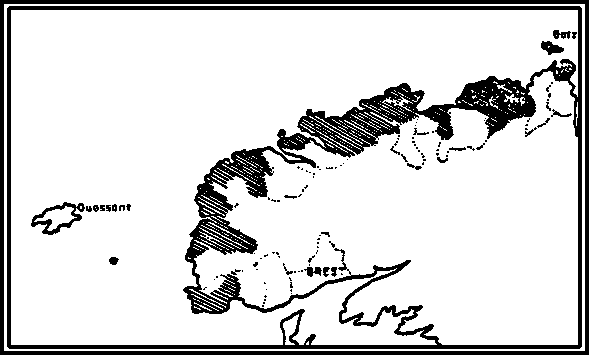4.1 Field inquiry
4.2 Bibliographical research
Data upon which this report was based was compiled from both field inquiry and bibliographical research. We will examine each source in turn.
A preliminary inquiry located those regions where customs and regulations had been preserved and those where they had lost their importance. Further field research concentrated on those areas where tradition remains strong, limiting further study of areas where tradition had been lost or weakened to only one or two communes.
The inquiries conducted in the Léon concerned 21 of these 32 coastal communities (Figure 3). Thirty-eight informants were contacted and the archives of 16 town halls were consulted. The interviews took place in homes and former work places. They were conducted in French, in Breton, or in a combination of the two and followed a pre-established but not inflexibile pattern.
Figure 3. Scope of the research. The communes marked are those in which the inquiry was conducted

One bibliographic source, the municipal ordinance, provides an invaluable bridge between field inquiry and pure bibliographical research. A vivid record of the local past and present, these ordinances are mayoral decisions recorded in a special register and carry the force of law within the commune. This type of municipal decree differs from the more widely applied decisions of the municipal council as a body.
Bibliographic research is important because it records facts and events beyond the memory of those living. Our memory is in fact quite short, each generation remembering little of the history of the generation preceding it. Because our informants could furnish little information about the time before the early 20th century it was necessary to go back in time by means of bibliographical research.
Reference to this extensive bibliography is made as needed throughout the text. All titles referred to are found in the final bibliography, although they are only a few of those available.
Condition of an Ascophyllum field after the harvest (Tréompan, 1978)